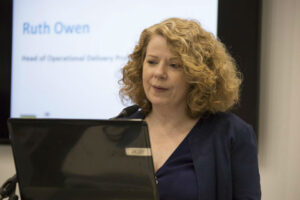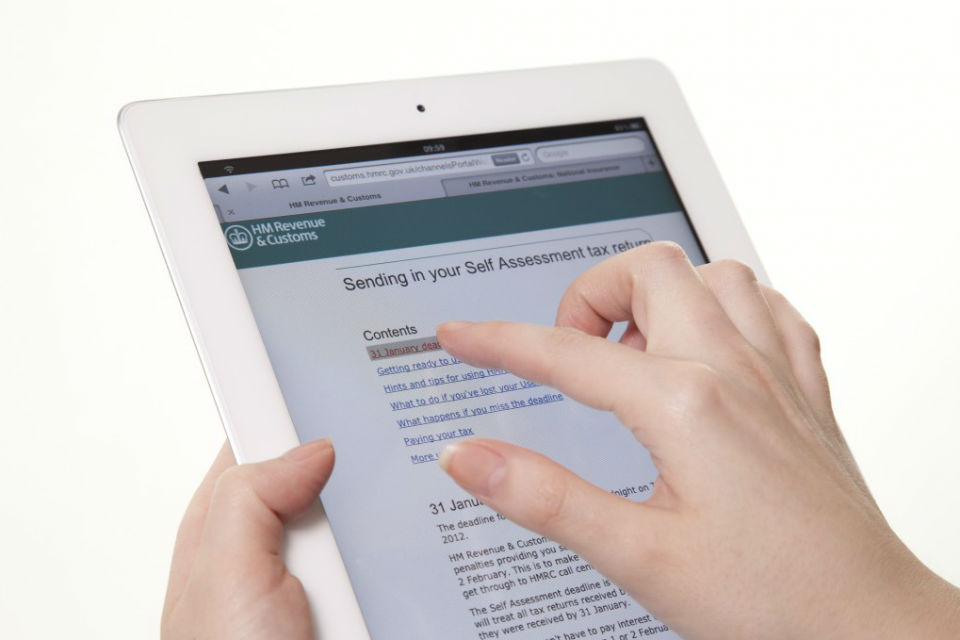
With 45 million customers, HMRC is one of the biggest consumer-facing organisations in the UK. Our challenge is to modernise our services to customers, moving away from the routine handling of 15 million paper correspondence and 50 million phone calls each year and towards customer self-service. We are making it easier for people to take care of their taxes and entitlements online, in real time, at any time, and at the lowest cost to us all.
Our two biggest peaks in customer contact are in January, as Self Assessment customers file their online tax returns, and July, as tax credits customers renew their claims ahead of the deadline at the end of the month.
Moving customers online
We have a strong track record of nudging Self Assessment customers towards digital channels, with 85% (8.7 million) of them now filing tax returns online. But, until recently, the story has been very different for our tax credits customers.
Just two years ago, our helplines received 2.9 million phone calls in the last two days before deadline alone. Many of these were repeat calls from customers unable to get through and with no other options open to them. We said “never again!”, and since then we have been taking a range of steps to ‘smooth the peak’. For instance, we now pre-populate renewals forms with data we hold, to reduce the numbers of customers needing to contact us. We enable them to renew their claims or report changes online; we nudge them to renew early; and we do all we can to make sure those who do call us receive the support they need in the most efficient way.
Listening to the frontline
Following this year’s tax credits peak, we want to share with you some of the initiatives and innovations we put into action this year. The majority of them came about through us talking to the experts – our customer-facing teams – and putting their ideas into action.
Most importantly, we gave tax credits customers the tools to do all they need online – supported by clear guidance to give them the confidence to do so, nudges through our marketing campaign and through social media prompts and advice. We knew that this customer group were big Facebook users, so we provided a range of updates and guidance throughout the days. And we tweeted – a lot – to prompt people to act, to give advice on simple queries (keeping customers online wherever we could) or, if they did need to call us, to let them know the best times to phone. Of the 2.5 million people renewing by the 31 July deadline, more than 750,000 did so online – almost twice as many as the previous year. In the week before deadline, 49% renewed online, with 90% satisfaction rates. Our new online tools were so easy to use, a third of online renewals were done on smartphones.

Alongside this, we pulled out all the stops to get people renewing early, having struggled in the past to deal with vast numbers leaving it to the last minute. We called more than 50,000 customers (with a history of leaving it late) in the days before the deadline and sent 3.2 million reminder SMS text messages encouraging early action.
Supporting those who aren't online
As HMRC continues to reduce its costs, we are clear that we need to drastically reduce the volumes of calls on our helplines, but also that the phone will remain an important channel for us. There will always be customers who are unable to self-serve online for one reason or another, and we need to be there for them. This year, we trained around 2,000 additional people from across HMRC, who left their day jobs in other parts of the department for a few days or weeks to support our customer services during our busiest peak. And we ran an Assisted Digital pilot to identify callers who, with a little bit of help, would be able to take care of things online in the future.
We also used robotics to reduce call times, automatically bringing together customer data in a single dashboard. This meant that our advisers could deal with calls efficiently without having to flick between different screens and customer records. The result – 2.5 million people renewed their tax credits on time, and we answered 91% of all call attempts on deadline day – something that would have seemed impossible just two years ago.

6 comments
Comment by Steppenwolf posted on
Why do you continue to refer to the Taxpayers as customers, customers denotes choice of which they do not have. Judge Barbera Mosedale surely spoke for everyone with an ounce of common sense when she said: I note in passing that all the reports mentioned refer to HMRC'S customers. While this is a regrettable misuse of language by HMRC as it implies choice and tax is voluntary!!!!
Comment by Dee posted on
I too applied for the marriage allowance and subsequently received a unique code to log in and formally apply, which my wife and I did together. So far, so good.
More recently I have receved a further email purporting to be from HMRC advising me that I need to use a unique code to apply for the marriage allowance! Having already undertaken this pain once I can only assume the second email is from a phishing source and so will not be duplicating my efforts.
If it is not from a phishing source then why is a second email required? What happened to the much trumpetedvision of 'once and done'?
Comment by Martin posted on
As a customer of tax credits, the online service is severely lacking. It assumes that everyone is happy to sign up with Verify, which involves handing lots of details to private sector firms. It is so limited in terms of what forms of verification it accepts. While I am very much online in most things, I am not willing to use verify to deal with the government. Why not just modernise Government Gateway? Why does everything have to be farmed out to the private sector?
I tried several times to get through on the phone and still have not been able to get through. Letters I sent are ignored and figures are still shown as estimated even though I have confirmed them.
Never mind, I'm sure the cuts to tax credits will dramatically reduce the numbers of middle earners who claim so the phone call issues will improve.
Comment by Debbie posted on
Like with Craig, as a customer and someone that works for the DWP, the services provided by HMRC still have a long way to go. I had query that couldn't be actioned on-line, I had a 50 minute hold on the telephone before I gave up. I sent a legal document to PAYE and it still hasn't been returned having been told they only send out 2nd class - I sent it recorded that was over three weeks ago and considering they have answered my query! Finally when it was registered, it was registered incorrectly and trying to get hold of the member of staff to sort it was impossible because I could only speak with the contact centre. I am in the process of writing a lengthy complaint. We are continually being told the customer is at the heart of the business - are we/they really!!!! Digital doesn't always work as sometimes you need to speak to people!
Comment by Craig posted on
From a customer point of view, and someone who works for HMRC, the on-line services have a very long way to go before being fit for purpose. The "Verify" system continously crashes or does not allow me to continue, and instructs me to contact HMRC. I have given up trying to set up the marriage allowance to enable me to use my wife's unused personal tax allowance. As for trying to contact and speak with someone from HMRC......forget it. Minimum wait times of over 45 minutes, at your own expense. Is the customer really at the heart of these decisions to move to a self-service culture or is it nothing more than a cost-cutting exercise due to a reduced workforce?
Comment by Mark W posted on
But can anyone understand or explain how a Tax Credits award is calculated? By luck, or judgement? And just how much overpayment is never recovered??